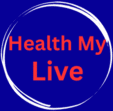
Asthma isn’t just an occasional cough or wheeze—it’s a chronic battle millions face daily. Picture tiny airways in your lungs suddenly narrowing, making each breath feel like sucking air through a clogged straw. This inflammation-and-squeeze response affects over 262 million people globally, according to the World Health Organization. For parents, watching a child gasp during an asthma attack can be terrifying; for adults, it might mean sleepless nights or missing work. But here’s the empowering truth: asthma can be controlled. With the right knowledge, you’re not just treating symptoms—you’re reclaiming your life.
Asthma starts with hypersensitive airways. Think of them as overzealous security guards. When pollen, smoke, or cold air shows up, these guards panic. They trigger inflammation, swelling the airway linings, while muscles tighten around them like a vice. Mucus floods the passageways, turning a simple breath into a struggle. Dr. Samantha Green, a pulmonologist at Johns Hopkins, explains it simply: “It’s a triple threat—swelling, squeezing, and clogging. That’s why a casual walk can leave someone breathless.” Genetics play a role too. If one parent has asthma, a child’s risk jumps 25%; if both do, it soars to 50%.
Triggers lurk everywhere, but they’re not universal. What sets off your asthma might not bother another. Common culprits include outdoor allergens like pollen and mold spores, which spike during seasonal changes. Indoor enemies? Dust mites in bedding and pet dander top the list. A 2023 study in the Journal of Allergy and Clinical Immunology found that 60% of asthma patients react to cats. Then there’s non-allergic asthma: cold air, exercise, stress, or even laughing hard. Workplace hazards matter too—bakers inhaling flour or hospital staff exposed to disinfectants can develop occupational asthma. Sarah, a 34-year-old teacher, shared her turning point: “I blamed my constant coughing on colds. Tracking symptoms in an asthma diary revealed it was chalk dust.”
Recognizing symptoms early is life-changing. Mild signs include a nagging nighttime cough or tightness after exercise. As attacks escalate, wheezing (that whistling sound on exhaling) and shortness of breath dominate. Severe episodes may involve gasping, pale skin, or trouble speaking. Ignoring these can spiral into emergencies. Take 9-year-old Leo, whose parents noticed his soccer games ended with coughing fits. Spirometry testing—where you blow hard into a tube—confirmed asthma. His mom recalls, “We caught it early. Now he uses an inhaler before practice and plays freely.”
Diagnosis blends detective work with technology. Doctors review medical histories, asking about family asthma, eczema, or allergies. Lung function tests like spirometry measure how much air you exhale and how fast. Peak flow meters, portable devices you use at home, track daily variations. For allergy-related asthma, skin prick tests identify triggers. Dr. Arjun Patel, an allergist, notes, “Objective data stops guesswork. One patient avoided ‘all pets’ for years. Testing showed she was only allergic to guinea pigs!”
Treatment has two missions: quick rescue during attacks and long-term control. Rescue inhalers like albuterol act fast, relaxing airway muscles in minutes. These are your emergency toolkit. For daily defense, controller meds reduce inflammation. Inhaled corticosteroids (ICS) such as fluticasone are first-line warriors, used preventatively. If ICS alone fails, combo inhalers add long-acting muscle relaxants. Biologics, injected or infused drugs for severe asthma, target specific immune pathways. Take Jenna, 28: “Monthly biologic shots cut my ER visits from six times a year to zero.”
Beyond medication, lifestyle shifts build resilience. Avoiding triggers is key—use allergen-proof mattress covers, vacuum with HEPA filters, and monitor air quality apps. Exercise strengthens lungs; swimming is ideal since warm, moist air eases breathing. Breathing techniques matter too. Papworth method, taught in pulmonary rehab, combines nasal breathing with relaxed diaphragmatic breathing to reduce over-breathing. Nutrition also plays a role. A European Respiratory Journal study linked Mediterranean diets (rich in fish and veggies) to 30% fewer asthma symptoms.
Action plans transform panic into preparedness. Co-created with your doctor, these personalized blueprints list daily meds, attack steps, and emergency contacts. The green zone means no symptoms—peak flow readings above 80% of your best. Yellow signals caution: peak flow dips, mild coughing. Here, you might double controller meds or use a rescue inhaler. Red means danger—extreme shortness of breath, lips turning blue. Immediate rescue meds and hospital help are critical. Mark, a firefighter with asthma, credits his plan: “During wildfire season, I follow it rigidly. It’s kept me on duty.”
Emerging research brings hope. “Smart inhalers” with Bluetooth track usage and alert you if doses are missed. For tough cases, bronchial thermoplasty applies heat to airway muscles, reducing their ability to squeeze shut—studies show it slashes severe attacks by 45%. Even gut health is in focus. Trials exploring probiotics suggest balanced gut flora might ease inflammation.
Living fully with asthma is possible. Olympic swimmer Nancy Rios won gold despite asthma. Her secret? “Sticking to my meds and warming up properly.” Schools now stock emergency inhalers, and workplaces accommodate trigger-free spaces. Still, myths persist. No, inhalers aren’t addictive—they’re lifesavers. And asthma isn’t “just in your head,” though stress can worsen it.
Relief begins with partnership. Work with your doctor to tailor treatments. Track symptoms. Advocate for your needs. As Dr. Green puts it, “Asthma is a condition you manage, not a life sentence.” Every breath you take confidently is a victory. Start your path today—one informed choice at a time.
